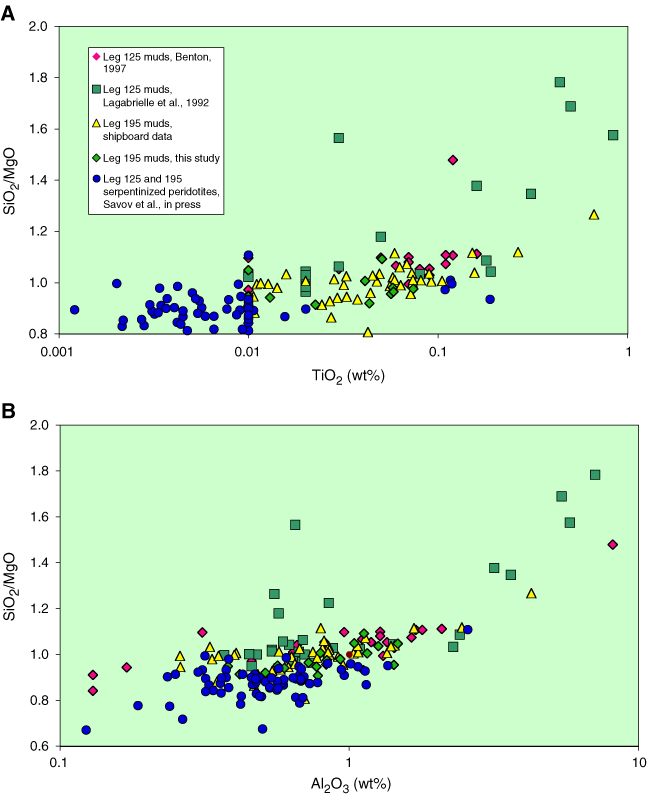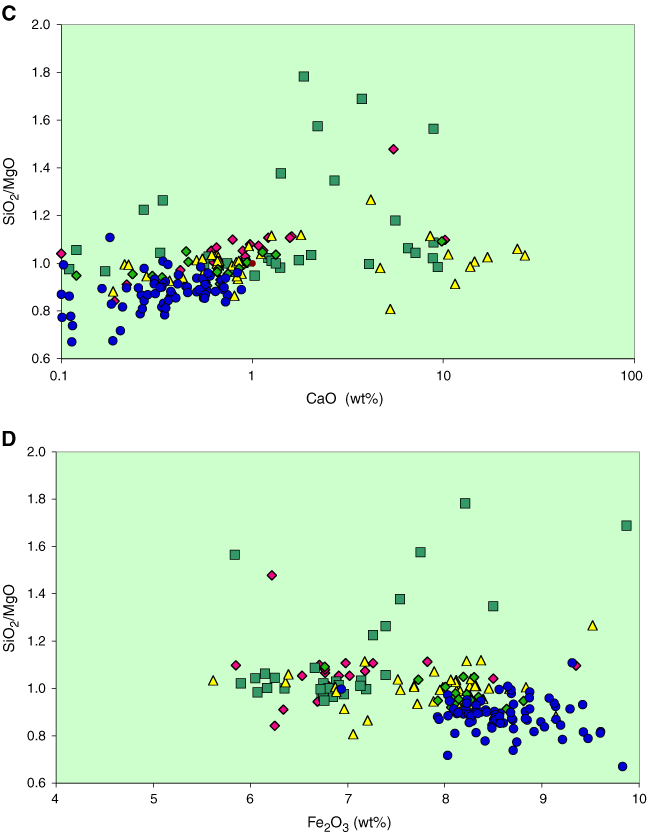
Figure F5. A. SiO2/MgO vs. TiO2 in serpentinite muds and ODP Legs 125 and 195 serpentinized peridotites. The majority of the serpentinite peridotites have lower TiO2 when compared to the serpentinite muds (the TiO2 of the serpentinized peridotites is always 0.01 wt%). There exists a slight positive correlation between the SiO2/MgO and TiO2 of the serpentinite muds. B. SiO2/MgO vs. Al2O3 for serpentinite muds. When compared to the serpentinized peridotites, the serpentinite muds from ODP Legs 125 and 195 have higher SiO2/MgO, but many also have higher Al2O3. C. SiO2/MgO vs. CaO for serpentinite muds. Note that many of the serpentinite muds have higher CaO contents than the serpentinized peridotites. Samples with very high CaO (>5 wt%) (in the shipboard and Lagabrielle et al. [1992] data sets), are samples recovered very close to the seafloor and contain aragonite crystals. Symbols are the same as in A. D. SiO2/MgO vs. Fe2O3 for serpentinite muds. Note that the serpentinite muds have lower Fe2O3 when compared with the serpentinized peridotites. The Leg 195 muds of Guggino et al. (2002) show the highest Fe2O3 contents among the serpentinite mud data sets. Symbols are the same as in A.





![]()